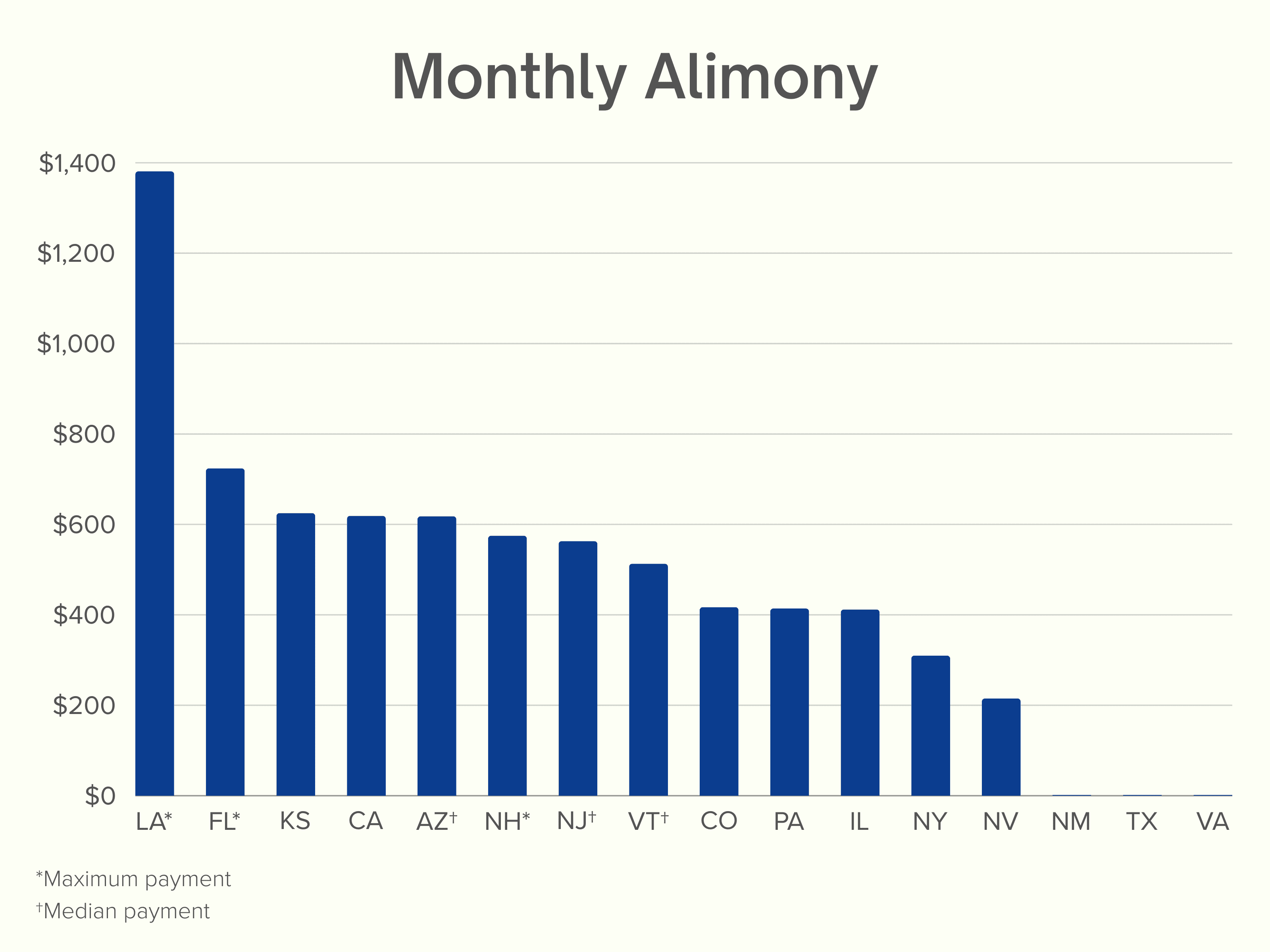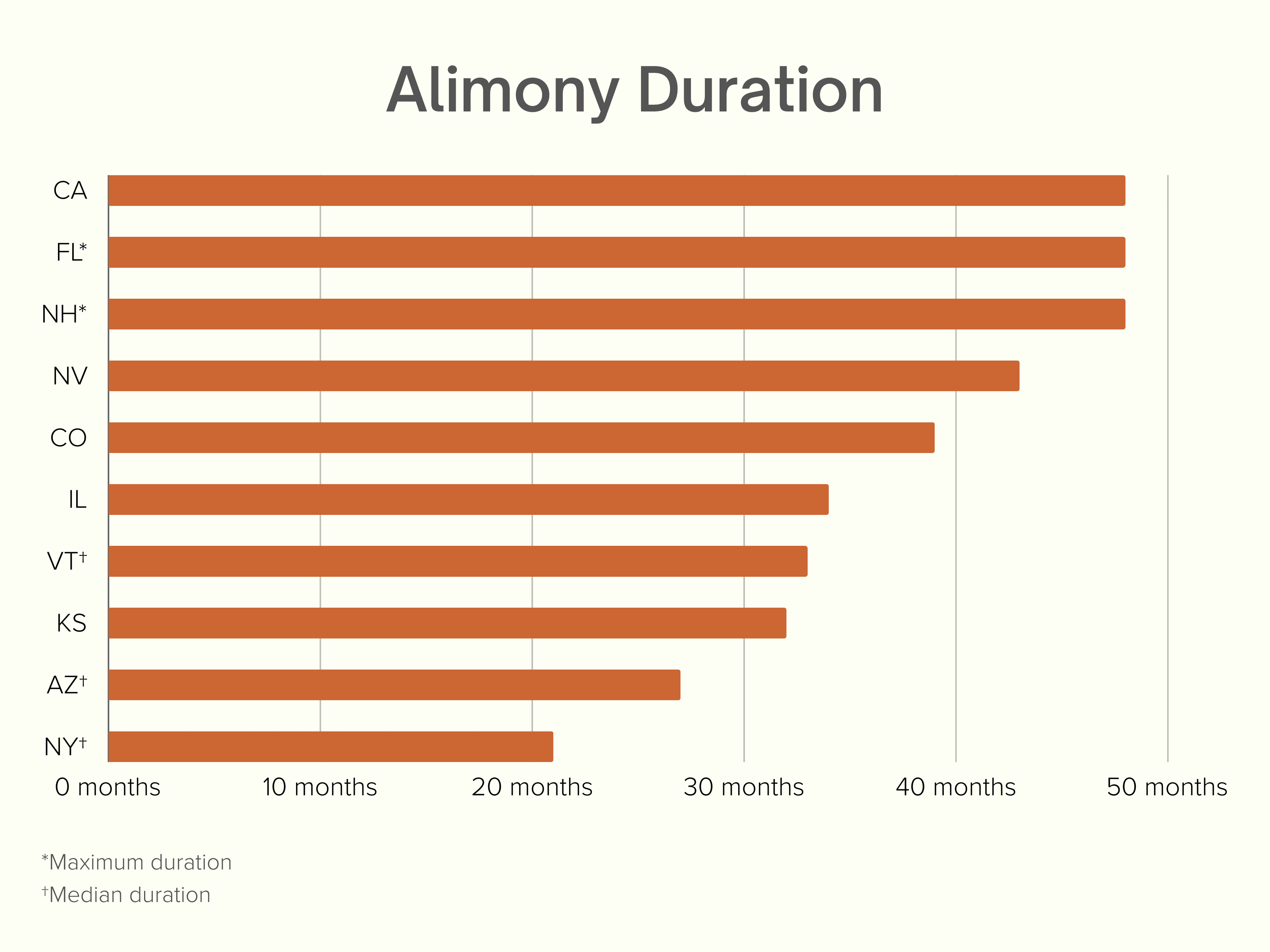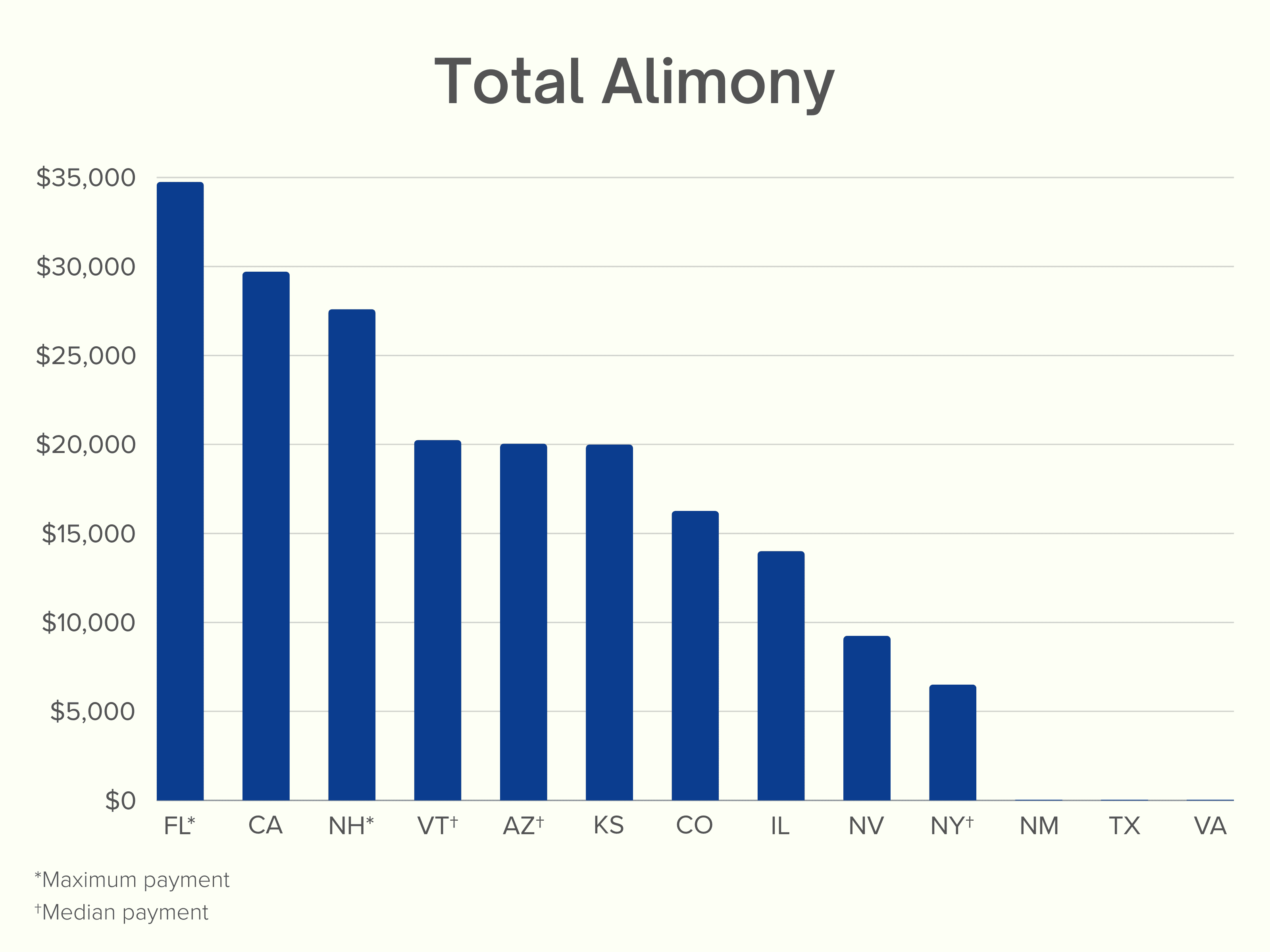How Much Is Alimony in Your State?
Study shows erratic alimony formulas across US
A typical U.S. divorce could end with an alimony payment ranging from $0 to $1,381 a month depending on the state, a new study shows.
In two-thirds of states, there's not even a reliable way to predict alimony at all.
Custody X Change, the co-parenting tool behind the study, says this shows the need for states to create research-based alimony guidelines.
If you're co-parenting, you may want to try Custody X Change. It helps you keep track of your schedule, calculate your parenting time and write a parenting plan. Make my schedule and plan now.
The most unusual states
When researchers entered information for a hypothetical couple into state alimony formulas, Louisiana's formula produced the highest result by far: a $1,381 maximum monthly payment. This is because it was the only formula that did not take the recipient's income into account.
The next-highest payment was nearly half the amount: a $724 monthly maximum in Florida.

Download: PNG | JPG; Use image with attribution
On the other end of the spectrum, the formulas in New Mexico, Texas and Virginia churned out no alimony whatsoever. (Texas, like Louisiana, does not consider recipient income, but that was irrelevant in this case because the marriage lasted less than 10 years and was thus ineligible for alimony in Texas.)
The median award overall was $465 a month.
"It's not right for alimony to depend so much on your location and your judge," said Ben Coltrin, Custody X Change co-founder and president. "Out of fairness to divorcing couples, states without formulas should create them — with careful research. And states that have formulas should assess them regularly."
The study
Custody X Change looked at 16 states with official or common formulas for alimony.
Researchers plugged in information for a hypothetical divorce:
- The wife's gross annual income is $35,000.
- The husband's gross annual income is $65,000.
- They were married for eight years.
- They'll share custody of their two children.
This information was based on other research about typical Americans. (See the study appendix.) The study assumes that the spouses are splitting property and finances fairly evenly.
Length of payments
Of the 13 states with a formula that produced an alimony award, only 10 had an official or common formula for how long payments should continue.
The duration ranged from six months (the minimum in Arizona) to 48 months (the recommendation in California and the maximum in several states).

Download: PNG | JPG; Use image with attribution
How long payments go on can have a major effect on the total paid out.
For instance, if our hypothetical husband lived in Kansas, he would pay $625 for 32 months: $20,000 total.
His payment in California would be $6 less each month. But it would go on for 16 additional months, so he would ultimately pay nearly $10,000 more in California than in Kansas. Those 16 extra payments make a big difference.

Download: PNG | JPG; Use image with attribution
State-by-state results
| State | Monthly amount | Notes | Duration (months) | Notes | Total | Notes |
| AZ | $618 | Median of $458–$778 | 27 | Median of 6–48 | $20,046 | Median of $2,748–$37,344 |
| CA | $619 | 48 | $29,712 | |||
| CO | $417 | 39 | $16,263 | |||
| FL | $724 | Maximum | 48 | Maximum | $34,752 | Maximum |
| IL | $412 | 34 | $14,008 | |||
| KS | $625 | 32 | $20,000 | |||
| LA | $1,381 | Maximum | ||||
| NH | $575 | Maximum | 48 | Maximum | $27,600 | Maximum |
| NJ | $563 | Median of $500–$625 | ||||
| NM | $0 | $0 | ||||
| NV | $215 | 43 | $9,245 | |||
| NY | $310 | 21 | Median of 14–28 | $6,510 | Median of $4,340–$8,680 | |
| PA | $414 | |||||
| TX | $0 | $0 | ||||
| VA | $0 | $0 | ||||
| VT | $513 | Median of $300–$725 | 33 | Median of 19–48 | $20,250 | Median of $5,700–$34,800 |
Last updated: January 2024
How alimony works
Alimony, also called spousal support or spousal maintenance, is money a person pays to their former spouse.
Judges have final say in alimony, even when spouses agree to an amount.
State law generally lists factors a judge should consider, e.g., each spouse's income and the length of the marriage.
Ten states in this study have a formula in their law to guide a judge. The formulas for the other six states are either recommended by a court or are common practice. Alimony in the remaining 34 states is difficult to predict.
Alimony might be a one-time payment, or it may last a certain number of months or until a disqualifying event (e.g. the recipient's remarriage or either ex-spouse's death).
Now that it's common to have both spouses work during a marriage, there's a movement to award alimony only when necessary — and for a limited duration.
For information on methodology, see the study appendix.
